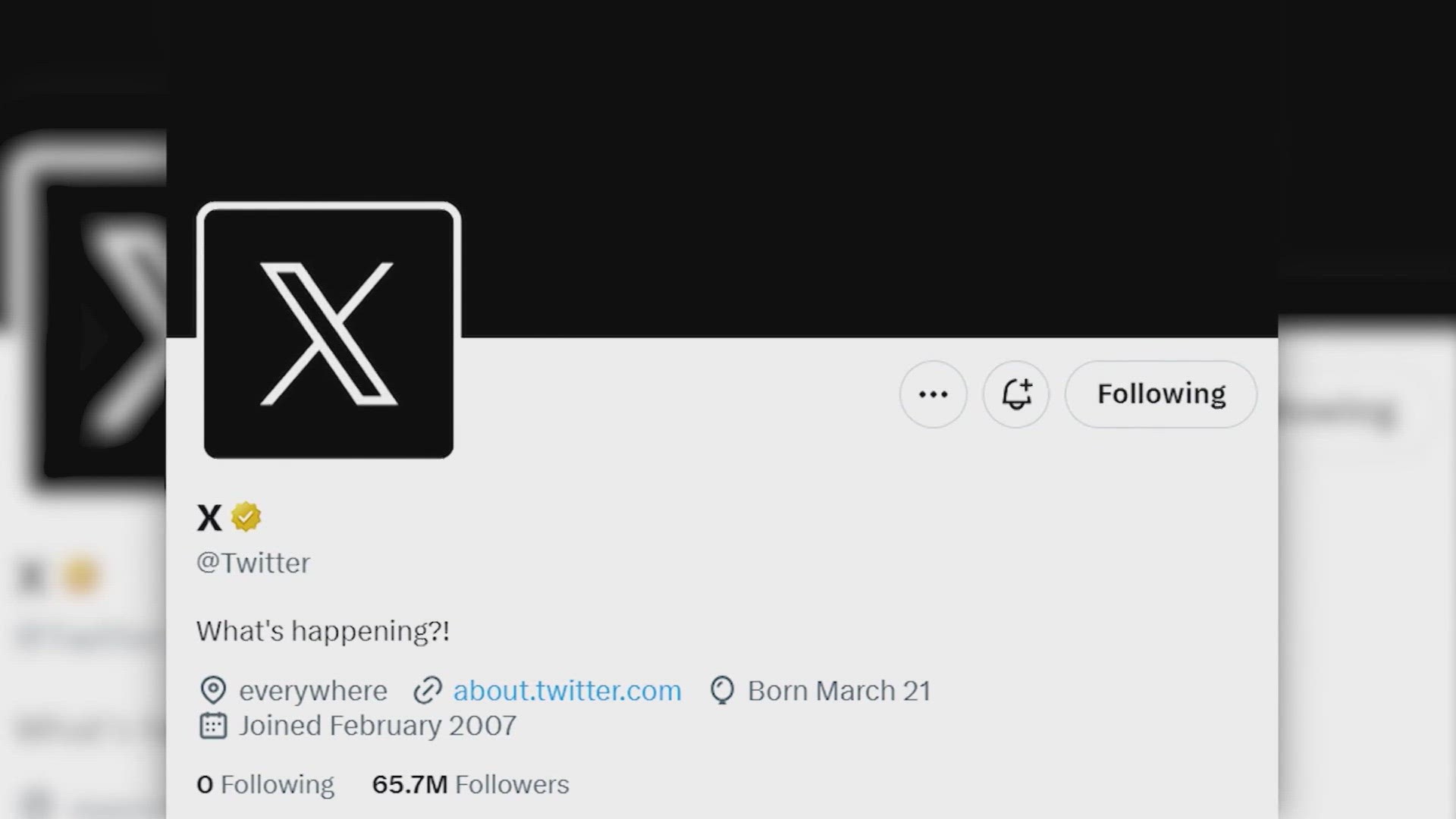WASHINGTON — X, the social media site formerly known as Twitter, has changed the way links to external websites show up.
Now, if you post a link to a news story or website on the site, it will appear as an image, and include text in the left-hand corner noting the domain of the link. Users must click on the image if they wish to visit the full article, which could lead to confusion.
Previously, for example, links to news articles would show a preview and also display the headline to provide some context.
Fortune reported in August that X owner Elon Musk planned to remove headlines from articles shared on the platform. Musk previously confirmed the report, saying in a post that the change was coming from him "directly," because he thought it would "greatly improve the esthetics."
However, the change began rolling out to users this week without any announcement or explanation, so some were clearly confused.
The move comes as Musk tries to encourage users to share their content directly on X.
"Our algorithm tries to optimize time spent on X, so links don’t get as much attention, because there is less time spent if people click away," he posted Tuesday.
As of Thursday morning, paid advertisements on X were still showing headlines under the old format.
Since purchasing Twitter, Musk has implemented a number of major changes including rebranding the service to "X" and ditching its longtime bird mascot. He also has a history of proclamations about coming features and policies that have not always come to fruition. Last month, he claimed they were considering charging everyone in order to use the site.
The company also recently updated its privacy policies to allow for the collection of biometric data and employment history, among other information.
Musk's latest decision builds on the growing rift between the platform and news organizations who for years used it to build their audiences. Among his more controversial moves was a decision to upend the site's verification system.
Under Twitter's previous leadership, journalists — no matter how small their outlet — could receive a blue checkmark next to their username that verified they were who they said they were. Celebrities and other public figures could also receive a verification. That changed when Musk ended the verification process and Twitter started doling out blue checkmarks to anyone who wanted one — without verifying their identity — as long as they pay a monthly subscription fee.
Musk has also gutted the team that had been responsible for moderating the content flowing across the platform, temporarily suspended accounts of journalists and has appeared to throttle, or slow down access to links, to media sites such as The New York Times.
Also on Thursday, two Democratic members of Congress sent a letter to Meta CEO Mark Zuckerberg and X CEO Linda Yaccarino expressing “serious concerns” about the emergence of AI-generated political ads on their platforms and asking each to explain any rules they're crafting to curb the harms to free and fair elections.
MORE TOP STORIES: 10 new millionaires, but no grand prize winner as Powerball jackpot rises to $1.4 billion
The Associated Press contributed to this report.

